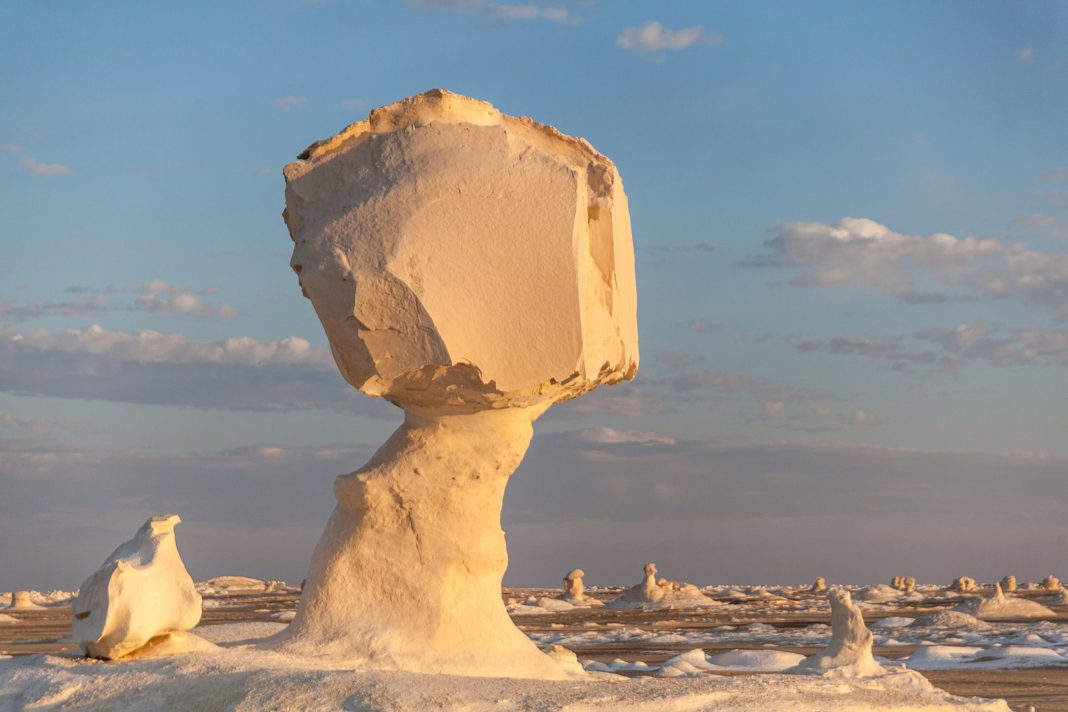White Desert Egypt is a small area in the Western Desert known as Sahara El Beyda, with about 303 square km; it lies on the way from Farafra to Bahariya, Sahara Egypt.
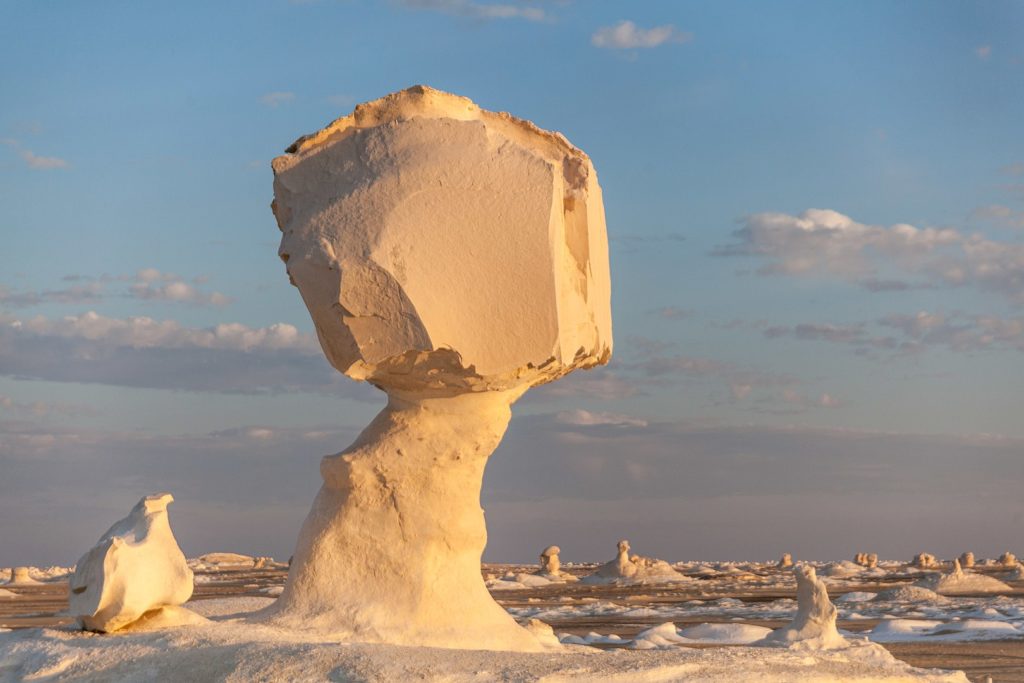
And millions of years ago, the White Desert was the seabed. Hard layers formed over a long time when the marine fauna and flora died off. The ocean dried up, and savannah was created in its place, along which herds of elephants and giraffes roamed.
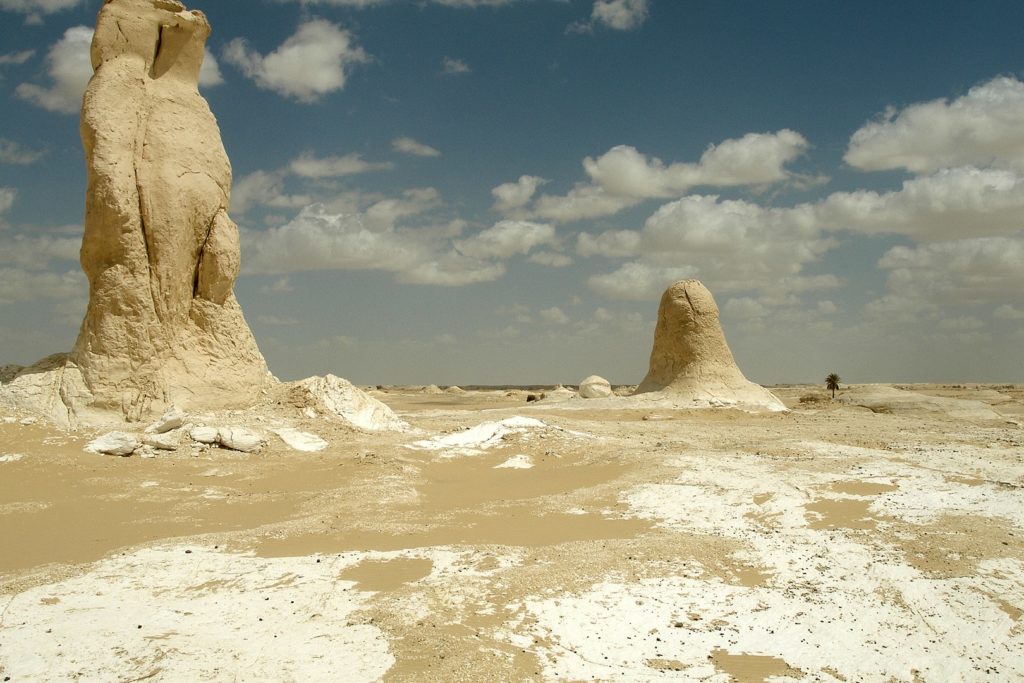
The chalk deposits accumulated over millions of years have become the basis for fantastic landscapes. White sands are represented by rows and piles of white piles scattered over orange, sandy base landscapes. They also appear as rock spires and other unusual white rock formations. White calcium, quartz crystals, or limestone make up the white sand and white rock of al Sahara.
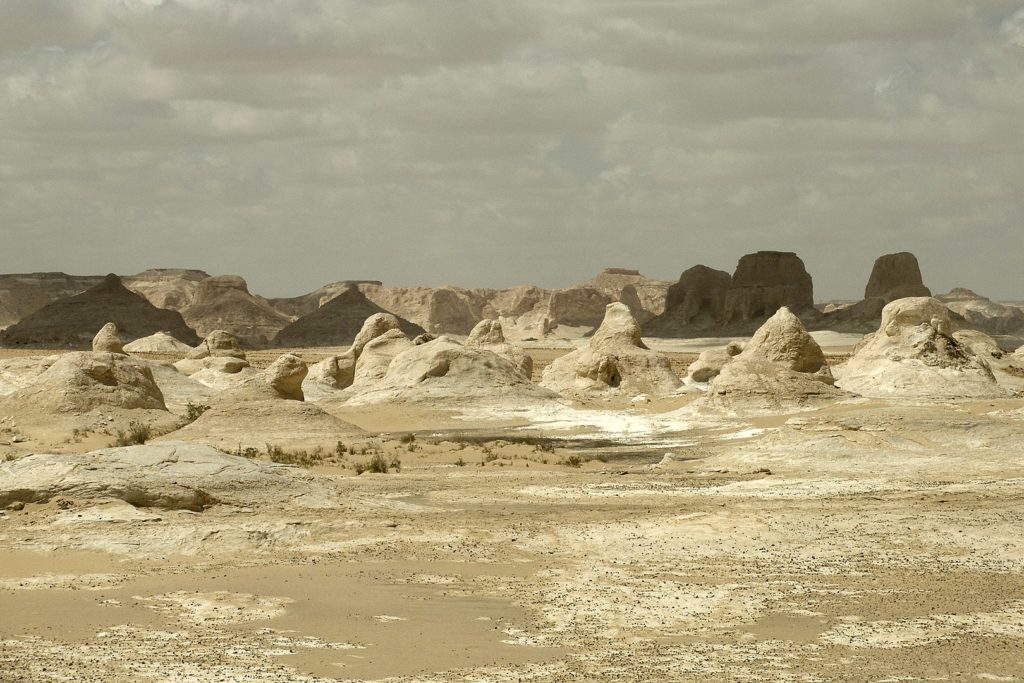
The unofficial symbols of the White Desert – “Mushroom” and “Chicken” – any excursion usually begins with these snow-white rocks-neighbors of a bizarre shape. White sand Egypt is an amazing sight. Huge blocks of weathered rocks seem to be driven into the sandy sea. They cannot resist the wind and sand forever. Formations, over time, will inevitably collapse and turn into sand.
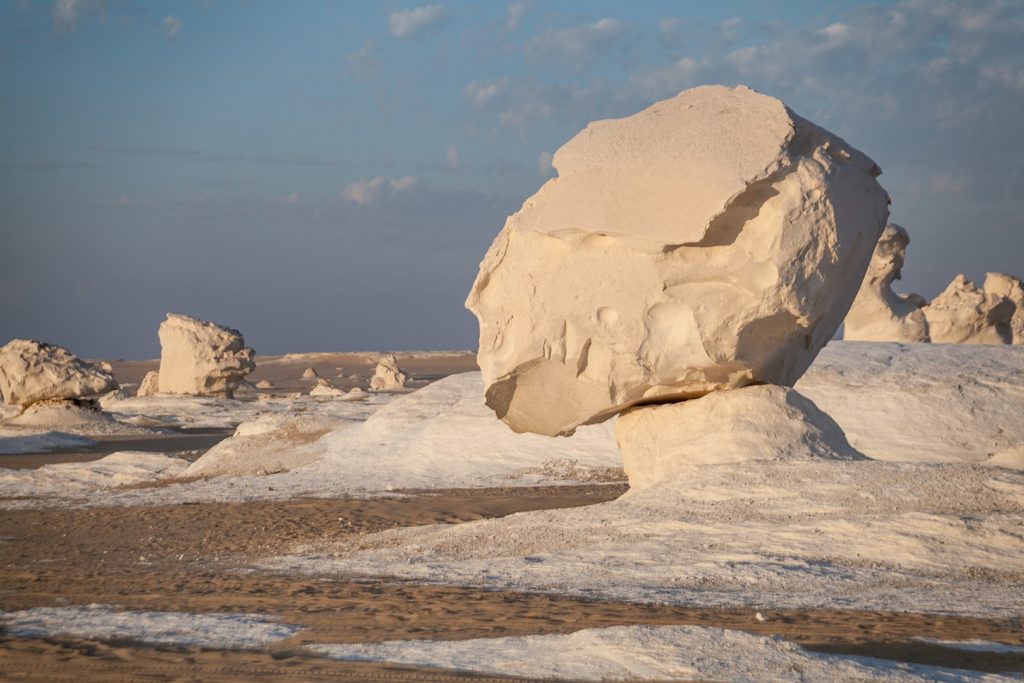
The White Desert Protected Area, a national park, was first established as a protected area in 2002. The park serves as the refuge for various animals, including the endangered Rhim gazelle and the vulnerable Dorcas gazelle, as well as Barbary sheep; jackals; Rüppell’s, red and fennec foxes; and the sand cat.
According to the Internet





